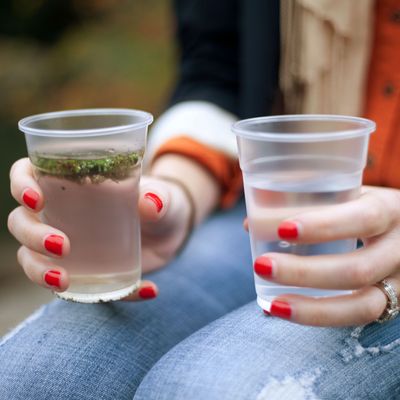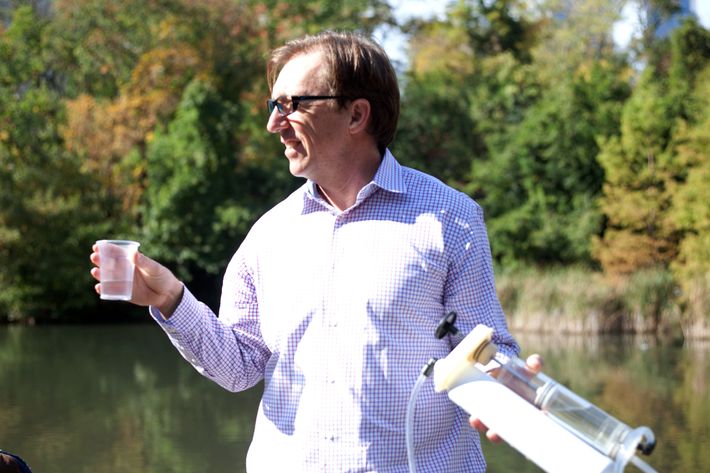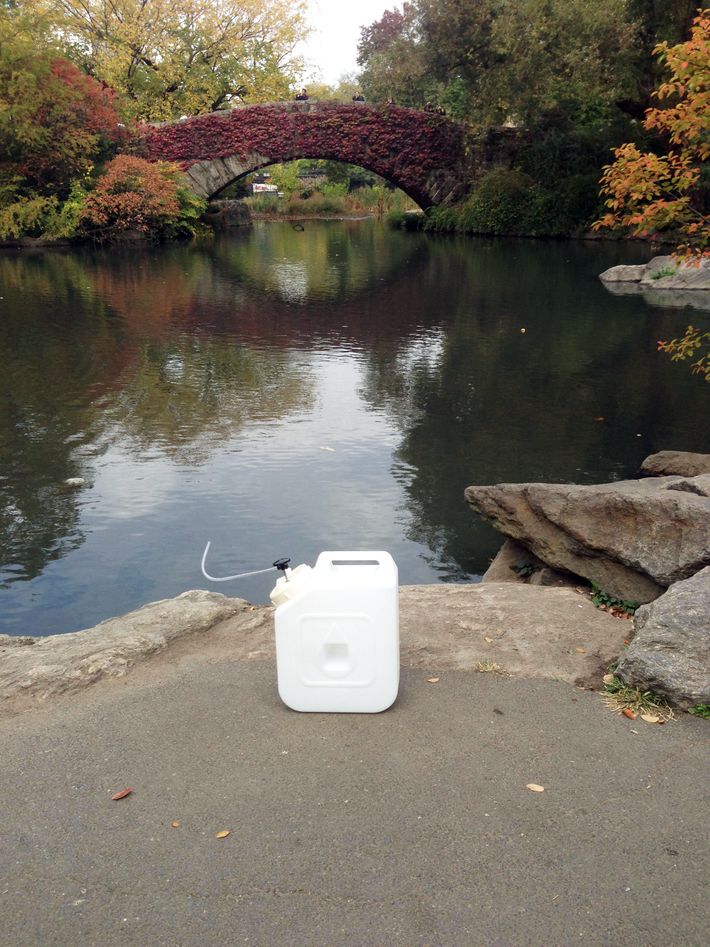
It’s been a little over a year since Superstorm Sandy hit New York, and many parts of the city are still rebuilding. But for those of us worried about future disasters, a pair of entrepreneurs aims to ease our concerns — at least about having potable water on hand when the next storm hits.
The inventors of LifeCan, a new high-tech handheld water purification system, issued the following invite a few weeks ago: “Please join us for drinks, fresh from the Central Park Pond!” I didn’t really balk at the “opportunity,” because I am the kind of beauty writer who will try anything if I think it might improve my life at some point. Sure, this was for the good of humanity, but I figured I should know what pond scum might do for my complexion.
Partners Tareq Risheq and Jeffrey Sharpe have paired up to launch LifeCan to the masses: as a disaster preparedness item, as a convenience for outdoor types, or for people who don’t want to use water bottles. I met up with Sharpe and his team at the Central Park Pond to test the product, and yes, to drink some pond water.

LifeCan’s dual filter system is easy to use. A hand pump to manually pull some water into the device. The first filter removes sulfur, sediment, chemicals, and other “organic matter.” “Like bird poop?” I asked, eyeing some lurking ducks. “Exactly!” responded Sharpe.
After the gunky stuff gets filtered out, the water flows through a second ultra-filtration filter which blocks bacteria and viruses. And speaking of bacteria, I was curious to know exactly what was in the water I was about to drink.
“No idea,” Sharpe said.
Here’s what I could see with the naked eye: turtles, the aforementioned ducks, some green gooey stuff floating near the shore, a dirty white plastic bag, and one of those heavy-duty rubber mats with holes in it that delis put on the floor when it snows. Bottoms up!
Sharpe, who had already enjoyed several draughts from the pond that day, assured me that I would be fine. The company had hired an intern to go around the country drinking LifeCan-filtered water from some of the most polluted places in the U.S., like the Chicago River, the reflecting pool in Washington, D.C., the fountains in front of the Bellagio in Las Vegas, and Floridian swamps, followed by a trip to Haiti. He lived to tell the tale. (Dear Condé Nast interns: Never complain ever again.)
Sharpe poured me a glass of the filtered water, which looked clean and clear. I took a deep breath and then took a small sip. The water was cool and tasted like absolutely nothing. I took another sip, but couldn’t manage to make myself swallow more. Two hours later, I was convinced I was getting a sore throat, but then realized it was probably from screaming in a SoulCycle class earlier that day.

I didn’t die, and more importantly, didn’t break out in boils. Nothing happened. What had I really subjected myself to, though? I contacted John Feighery, a scientist who used to work for NASA developing safe-water devices for astronauts. He just launched an app called M-water, which tracks E.coli contamination in water sources throughout the world. Just for fun, he had done some testing on bodies of water around NYC. While the Central Park Pond wasn’t on the list, you can extrapolate the findings from other bodies of water in Manhattan. Conclusion: That water is downright disgusting.
E.coli, a bacterium commonly found in raw sewage, is used as an indicator of contamination. According to Feighery, the level of E.coli in water considered safe for swimming by the EPA is about 100CFU/100ml. The Central Park Reservoir contained 200 CFU/100ml and the Hudson River a whopping 500 CFU/100ml. Based on my descriptions of the abundant wildlife in the area of the Central Park Pond, Feighery predicted that the E.coli concentration was probably pretty high. His advice? “Don’t drink from it!” And: “The standards of WHO and the EPA are that there should be no E. coli in any [drinking water] samples. It means pathogens could be transmitted.”
LifeCan is still in the early stages of production. According to Sharpe, SimpliPure, the company behind LifeCan, has invested $1 million in product development and research so far. SimpliPure’s mission is “buy one, donate one,” an increasingly familiar retail concept. (See: Tom’s shoes and Warby Parker eyeglasses.) SimpliPure will donate a LifeCan for each one that someone buys to people in countries where clean water isn’t easy to come by.
I’m happy to report that several weeks later, I appear to be free of all gastrointestinal pathogens, but until Armageddon, or the next natural disaster, I will probably stick to the $2 water peddled by drink carts in the park.




